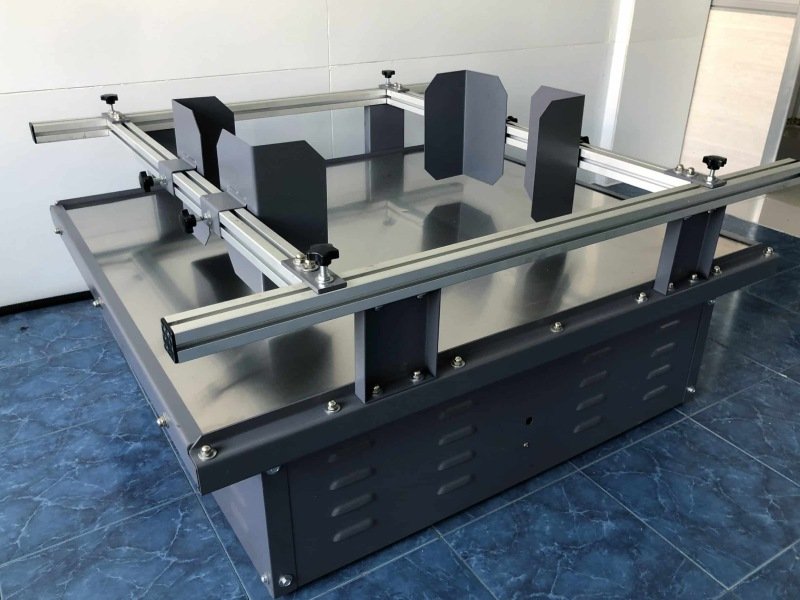Lever handles are ubiquitous yet often overlooked components of everyday life. Found on doors, tools, machinery, and even household appliances, these simple mechanisms play a critical role in how we interact with our environments. Unlike knobs or buttons, lever handles offer a unique combination of ergonomic design, mechanical advantage, and aesthetic versatility, making them a preferred choice across residential, commercial, and industrial settings. This article delves into the essence of lever handles—what they are, how they work, their historical evolution, and their diverse applications in modern life.
What Are Lever Handles?
At its core, a lever handle is a type of operating mechanism that uses a lever—a rigid bar pivoted at a fixed point called a fulcrum—to transmit force or motion. In simpler terms, it’s a handle shaped like a bar or rod that you push, pull, or turn to perform an action, such as opening a door, activating a machine, or adjusting a setting. The design leverages the principles of physics, specifically the lever’s ability to amplify force, making tasks easier and more efficient for the user.
Lever handles are most commonly associated with doors, where they replace traditional round knobs. Instead of twisting your wrist to turn a knob, you simply press down or lift up on the lever to release a latch or lock. This straightforward motion has made lever handles a staple in modern architecture and design, but their utility extends far beyond doorways, as we’ll explore later.
The anatomy of a typical lever handle includes several key components:
- The Lever Arm: The elongated handle that the user grips or presses.
- The Spindle: A rod or shaft connecting the lever to the mechanism it controls (e.g., a latch or lock).
- The Rose or Escutcheon: A plate or cover that secures the lever to the surface (e.g., a door) and often enhances its aesthetic appeal.
- The Fulcrum: The pivot point around which the lever rotates.
Materials for lever handles vary widely depending on their intended use. Stainless steel, brass, bronze, and aluminum are popular choices for their durability and corrosion resistance, while wood, glass, or plastic may be used for decorative or lightweight applications.
A Brief History of Lever Handles
The concept of the lever dates back thousands of years, with ancient civilizations like the Egyptians and Greeks using levers in tools and construction. However, the lever handle as we know it today—particularly in the context of doors—emerged much later. Early door mechanisms relied on crude latches or sliding bolts, operated by hand or simple pulls. The introduction of lever-operated latches in Europe during the Middle Ages marked a turning point, as blacksmiths and craftsmen began experimenting with designs that combined functionality with artistry.
By the 19th century, the Industrial Revolution brought mass production and standardization to lever handles. Architects and designers embraced them for their practicality and the opportunity they offered for embellishment. Victorian-era homes, for instance, featured ornate brass lever handles with intricate engravings, reflecting the period’s emphasis on decorative excess. In contrast, the 20th century saw a shift toward minimalist, functional designs, influenced by movements like Bauhaus and modernism.
Today, lever handles are a blend of tradition and innovation, with advanced manufacturing techniques enabling precise engineering and a vast array of styles to suit any taste or purpose.
Why Lever Handles Matter: Advantages Over Alternatives
Lever handles offer distinct advantages over other operating mechanisms, such as knobs or push buttons. These benefits stem from their ergonomic design and mechanical efficiency:
- Användarvänlighet: The lever’s shape allows users to apply force with minimal effort. A gentle push or pull is often sufficient, making them ideal for people with limited hand strength or dexterity, such as children, the elderly, or individuals with disabilities.
- Accessibility: In many countries, building codes mandate lever handles in public spaces because they comply with accessibility standards, such as the Americans with Disabilities Act (ADA). Unlike knobs, which require a twisting motion, levers can be operated with an elbow or forearm if hands are unavailable.
- Mechanical Advantage: The length of the lever arm amplifies the force applied, reducing the effort needed to move a latch, turn a gear, or activate a switch.
- Mångsidighet: Lever handles come in countless shapes, sizes, and finishes, making them adaptable to diverse aesthetic and functional needs.
- Hållbarhet: Well-designed lever handles, especially those made from robust materials like stainless steel, can withstand frequent use without wearing out.
Compared to knobs, which can be slippery or difficult to grip, or buttons, which may require precise pressure, lever handles strike a balance between simplicity and effectiveness. This balance has cemented their place in both practical and decorative applications.
Applications of Lever Handles
While lever handles are most recognizable on doors, their utility spans a wide range of contexts. Below, we explore their primary applications, from residential settings to specialized industrial uses.
1. Residential Doors
In homes, lever handles are a common sight on interior and exterior doors. They offer a sleek alternative to traditional knobs, blending seamlessly with modern décor while providing practical benefits. For example:
- Interior Doors: Lever handles on bedroom, bathroom, and closet doors enhance accessibility and add a touch of style. Privacy levers, which include locking mechanisms, are popular for bathrooms and bedrooms.
- Entry Doors: Exterior lever handles often pair with deadbolts or smart locks, combining security with ease of access. Homeowners can choose from finishes like matte black, satin nickel, or aged bronze to match their home’s aesthetic.
Residential lever handles also come in specialized variants, such as antimicrobial coatings for hygiene-conscious households or child-safe designs that prevent accidental lock-ins.
2. Commercial and Public Buildings
In offices, schools, hospitals, and other public spaces, lever handles are virtually standard. Their accessibility and durability make them ideal for high-traffic environments. Key applications include:
- Office Doors: Lever handles facilitate quick entry and exit, often integrated with keycard or biometric systems for security.
- Healthcare Facilities: Hospitals favor lever handles because they can be operated without hands, reducing the spread of germs. Antimicrobial finishes are especially common here.
- Educational Institutions: Schools and universities use lever handles to ensure compliance with accessibility laws, allowing students and staff of all abilities to navigate buildings effortlessly.
In these settings, lever handles are often paired with panic bars or exit devices on emergency exits, ensuring safe and rapid evacuation when needed.
3. Industrial and Mechanical Uses
Beyond doors, lever handles play a critical role in machinery and equipment. Their ability to transmit force efficiently makes them indispensable in industrial contexts:
- Machine Controls: Lever handles on lathes, presses, and conveyor systems allow operators to adjust settings or stop operations with precision. For example, a long lever handle on a manual press amplifies the user’s force, making heavy tasks manageable.
- Vehicles: In older cars, trucks, and tractors, lever handles controlled gear shifts, brakes, or throttles. While electronic controls have largely replaced them in modern vehicles, vintage restorations still rely on authentic lever designs.
- Tools: Hand tools like wrenches, jacks, and clamps often incorporate lever handles to maximize leverage and reduce user fatigue.
Industrial lever handles are typically rugged, made from reinforced steel or alloys to withstand harsh conditions like extreme temperatures or corrosive environments.
4. Furniture and Appliances
Lever handles also appear in smaller-scale applications, enhancing usability in everyday objects:
- Cabinets and Drawers: Kitchen cabinets or office furniture may feature lever-style pulls, offering a comfortable grip compared to knobs or recessed handles.
- Appliances: Some ovens, refrigerators, or washing machines use lever handles for door operation, especially in commercial-grade models designed for frequent use.
These applications prioritize both form and function, with designers selecting lever shapes that complement the item’s overall look.
5. Decorative and Artistic Uses
Lever handles aren’t just utilitarian—they’re also a canvas for creativity. High-end manufacturers and artisans craft bespoke lever handles for luxury homes, hotels, and heritage buildings:
- Custom Designs: Hand-forged levers with intricate patterns or precious metal inlays cater to clients seeking unique, statement-making hardware.
- Restoration Projects: Historic buildings often require reproduction lever handles to match original designs, preserving architectural authenticity.
In these cases, the lever handle transcends its practical purpose, becoming a focal point of interior design.
Types of Lever Handles
Lever handles come in various styles and configurations, each suited to specific needs:
- Straight Levers: Simple, linear designs common in modern homes and offices.
- Curved Levers: Ergonomic shapes that fit naturally in the hand, often used in residential settings.
- Return Levers: Feature a slight bend at the end to prevent clothing from catching, popular in commercial spaces.
- Offset Levers: Angled away from the door for extra knuckle clearance, ideal for tight spaces.
- Locking Levers: Include built-in locks for privacy or security, such as key-operated or thumb-turn mechanisms.
Finishes range from polished chrome to oil-rubbed bronze, allowing customization to suit any environment.
Installation and Maintenance
Installing a lever handle is relatively straightforward, especially for doors with pre-drilled holes. The process typically involves attaching the rose or escutcheon to the door, inserting the spindle through the latch mechanism, and securing the lever on both sides with screws. Professional installation is recommended for complex systems, such as those with electronic locks.
Maintenance depends on the material and usage. Stainless steel levers require occasional wiping with a damp cloth to remove fingerprints, while brass may need polishing to maintain its shine. Regular checks for loose screws or worn components ensure long-term functionality.
The Future of Lever Handles
As technology advances, lever handles are evolving to meet new demands. Smart lever handles with integrated sensors or Bluetooth connectivity allow remote locking and unlocking via smartphone apps. Touchless designs, activated by motion or voice commands, are gaining traction in hygiene-sensitive environments like hospitals and restaurants. Meanwhile, sustainable manufacturing—using recycled materials or eco-friendly coatings—reflects growing environmental consciousness.
Despite these innovations, the lever handle’s core appeal remains unchanged: its ability to make interaction with the world simpler, safer, and more intuitive.
Slutsats
Lever handles may seem like a small detail, but their impact is profound. From enabling accessibility in public buildings to enhancing the elegance of a home, these unassuming devices bridge form and function in ways few other mechanisms can. Whether you’re pushing open a door, operating a machine, or admiring a handcrafted design, lever handles demonstrate the power of thoughtful engineering. As they continue to evolve, their applications will only expand, proving that even the simplest tools can shape how we live and work.







